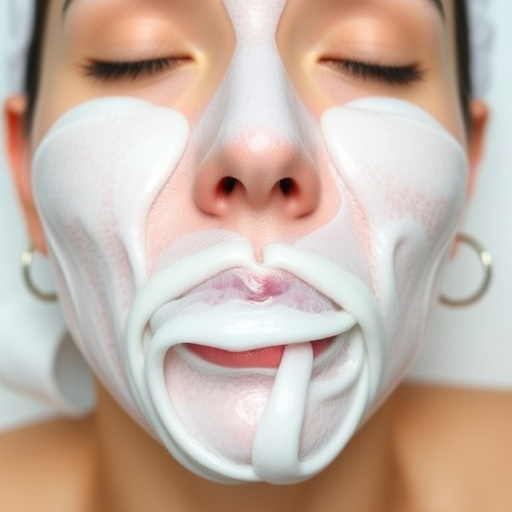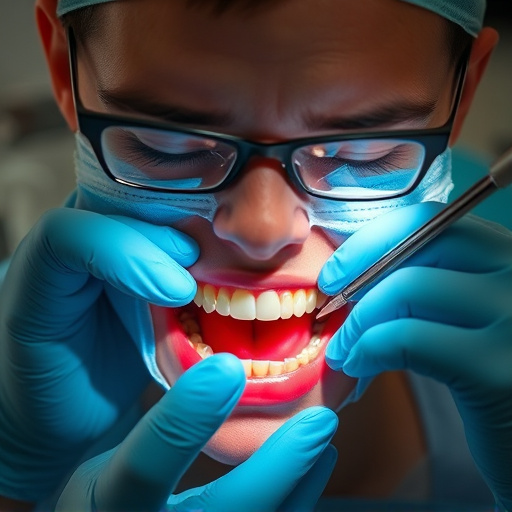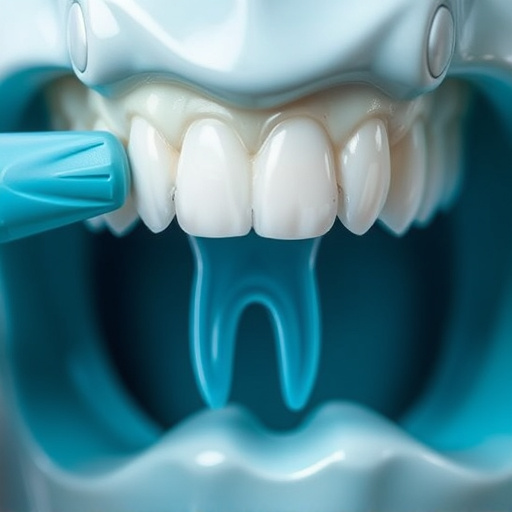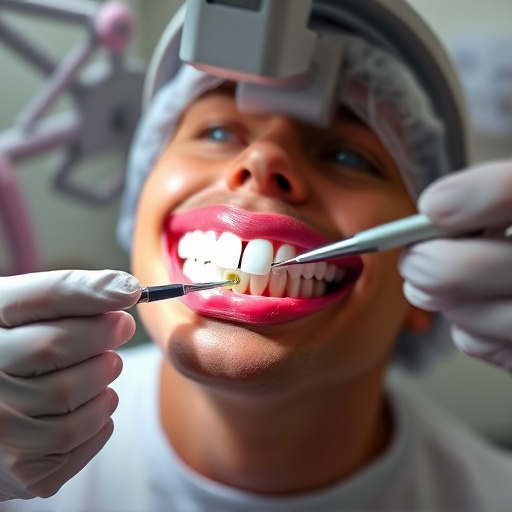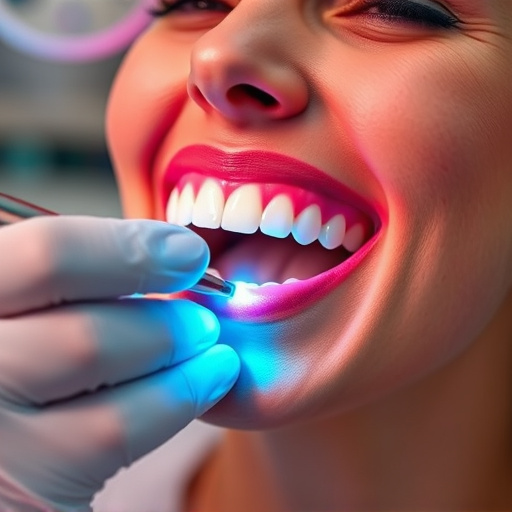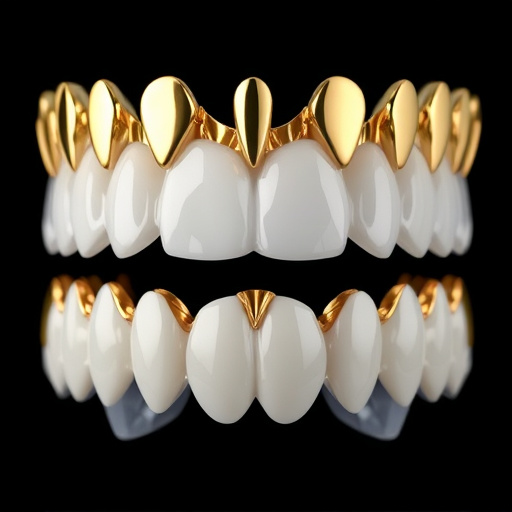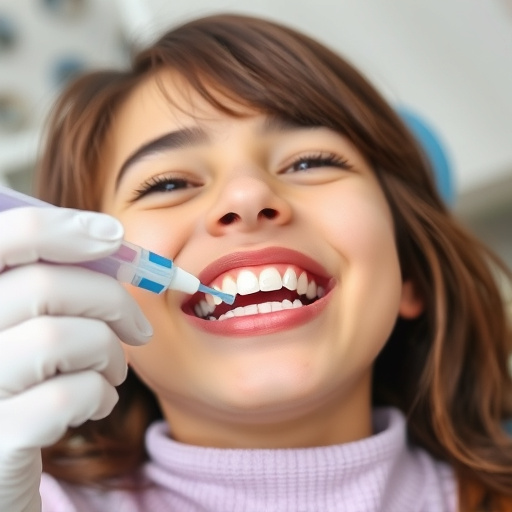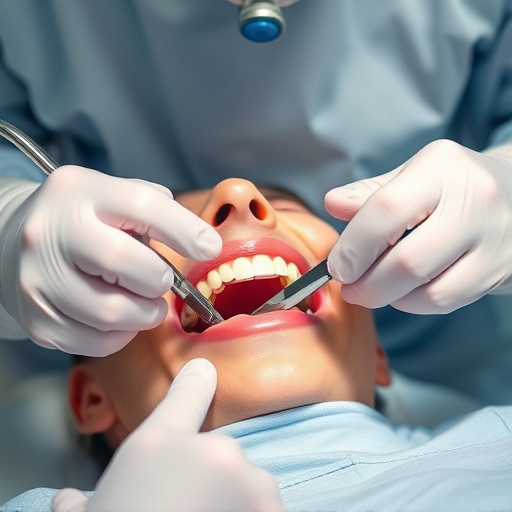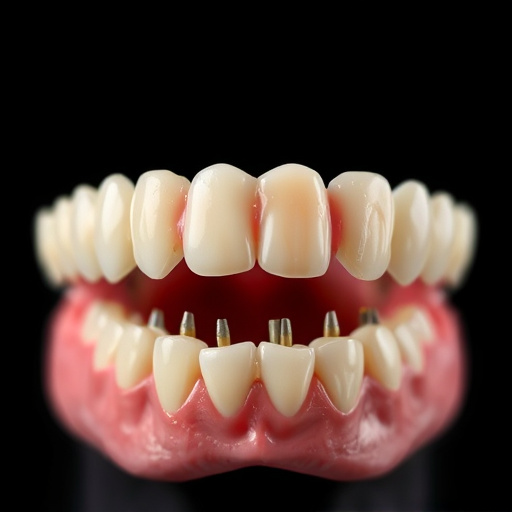Intraoral cameras revolutionize dental care by providing high-resolution images of teeth, gums, and tissues, enabling early detection of tooth decay and gum disease. These tools enhance patient care through improved communication, accurate visual records, and education. To maximize benefits, prioritize patient comfort, address concerns openly, capture clear images, and compare current findings with previous records. Intraoral camera examinations are crucial for preventive dentistry, cosmetic practices, and enhancing patient understanding during treatments like bonding or clear aligner therapy.
Discover the transformative power of intraoral cameras in dental care. This innovative technology offers a detailed, visual perspective during examinations, empowering both dentists and patients. By capturing high-resolution images of teeth and gums, intraoral cameras facilitate better communication and understanding of procedures. The article explores the benefits of this tool, from improved diagnostic accuracy to enhanced patient education, providing best practices for effective use in modern dental practices.
- Understanding Intraoral Cameras: Tools for Comprehensive Dental Care
- Benefits of Using Intraoral Cameras During Examinations
- Best Practices for Effective Intraoral Camera Use in Explaining Procedures
Understanding Intraoral Cameras: Tools for Comprehensive Dental Care
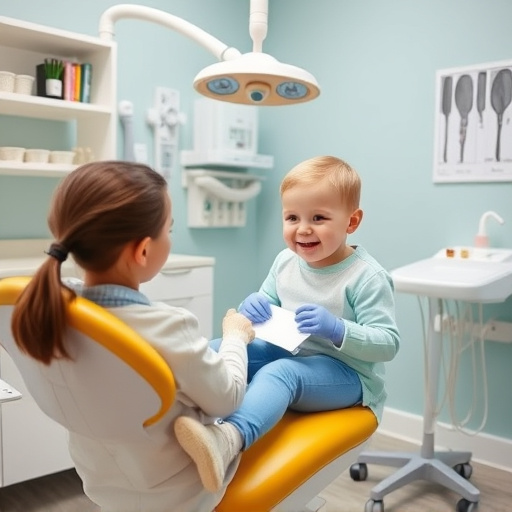
Intraoral cameras have transformed dental care by providing a detailed window into the mouth’s intricate structures. These advanced tools capture high-resolution images of teeth, gums, and oral tissues, enabling dentists to conduct comprehensive examinations. Unlike traditional visual inspections, intraoral cameras offer a more accurate and thorough assessment, facilitating early detection of issues like tooth decay, gum disease, or abnormalities that may be missed during routine visual checks.
By integrating intraoral camera examination into preventive dentistry and routine oral exams, dentists can significantly enhance patient care. The detailed visuals facilitate better communication between dentist and patient, as the former can point out specific areas of concern. Moreover, these images serve as valuable records for tracking oral health over time, making them essential in both general and cosmetic dentistry practices.
Benefits of Using Intraoral Cameras During Examinations
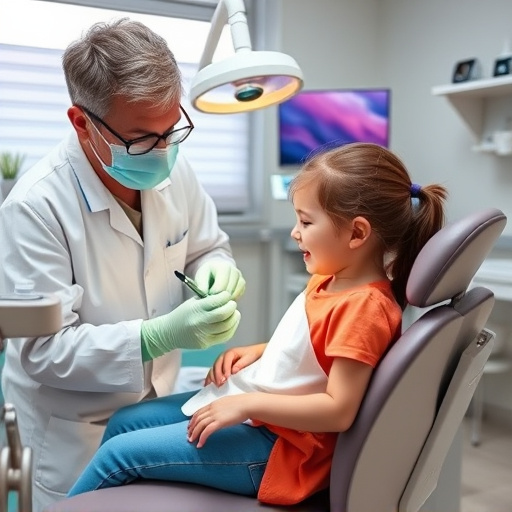
The integration of intraoral cameras into dental examinations has revolutionized the way dentists interact with their patients and diagnose oral health issues. These tiny yet powerful tools offer numerous advantages, enhancing both the precision and communication aspect of dental care. One of the key benefits is their ability to provide a clear, detailed view of the oral cavity, allowing dentists to identify even the subtlest anomalies that might be missed through traditional visual inspection alone. With high-resolution imaging, dental professionals can now detect early signs of decay, gum disease, or abnormalities in teeth and soft tissues, enabling prompt and effective treatment planning.
Furthermore, intraoral cameras facilitate patient education by offering a visual representation of their oral health status. Dentists can show patients specific areas of concern, making complex procedures more understandable. This visual approach is particularly valuable in promoting better oral hygiene practices and patient compliance with recommended treatments, such as the use of clear aligners for cosmetic dentistry or preventive measures to combat gum disease, thus contributing to a healthier smile.
Best Practices for Effective Intraoral Camera Use in Explaining Procedures
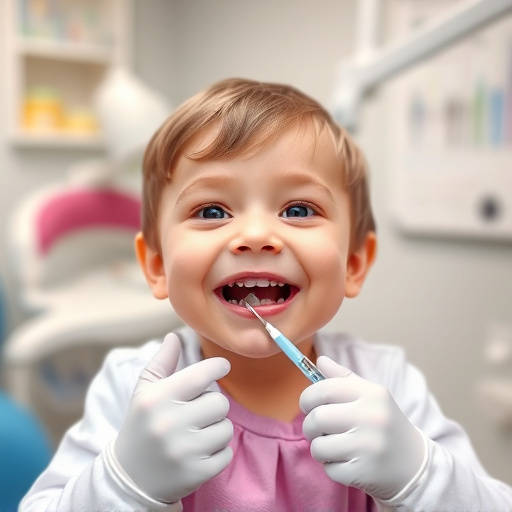
To make the most of an intraoral camera examination, best practices include ensuring patient comfort and cooperation. Begin by explaining the purpose and benefits of using the intraoral camera, addressing any concerns or questions openly. This transparency fosters trust and makes the procedure less intimidating. Frame the exam as a collaborative effort to achieve optimal oral health, allowing patients to actively participate in their care.
During the examination, maintain a steady hand and focus on clear, detailed images. Highlight specific areas of interest using annotations or measurements within the camera software. Compare findings with previous records, if available, to illustrate progress or areas requiring attention. For general dentistry cases, such as dental bonding or clear aligner treatments, these visual aids can significantly enhance patient understanding and adherence to recommended procedures.
Intraoral camera examinations have transformed dental care by providing a clear, comprehensive view of oral health. By integrating these tools into routine practices, dentists can offer more informed explanations of procedures, enhance patient understanding, and foster trust. The benefits are numerous, from improved diagnostic accuracy to enhanced communication and patient satisfaction. Adhering to best practices ensures that intraoral cameras become an indispensable asset in modern dental care, empowering both professionals and patients alike.






